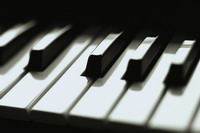Piano Sheets > Aaron Boyd Sheet Music > God Of This City (ver. 1) Piano Sheet
God Of This City (ver. 1) by Aaron Boyd - Piano Sheets and Free Sheet Music

About the Song
God of This City is the title track of God of This City, an album by contemporary Christian band Bluetree. It was released on March 3, 2009 and charted at #103 on the Billboard 200. It is essentially a restyled and edited version of the band's debut release Greater Things. Aaron Boyd is the lead singer for Bluetree, a Northern Irish contemporary Christian band signed to Lucid Entertainment. The band is most well known for its song "God of This City", which received international exposure when it was covered by Chris Tomlin on the Passion: God of This City and Hello Love albums. God of This City is the title track of God of This City, an album by contemporary Christian band Bluetree. It was released on March 3, 2009 and charted at #103 on the Billboard 200. It is essentially a restyled and edited version of the band's debut release Greater Things.Aaron Boyd is the lead singer for Bluetree, a.
Download this sheet!
About the Artist

Random article
The joy of reading piano notes Music is said to be the best medicine developed by nature. The thought and feel is said to have the power to bring back the dead. While playing music gives you the joy you just cannot contain, same is the case with reading piano music sheets. After all, it is sheet music which tells you exactly how to play that favorite tune of yours.
Many feel that reading piano music sheets is an ardent task. Well, this is exactly where are all wrong. It is certainly not the case that one glance and you will understand what is written in that sheet music. But it is certainly not as difficult as expected! Sheet Music is the language of expressing music in a readable form. And just like to learn a new language you need dedication and perseverance, same is the case with (More...)
